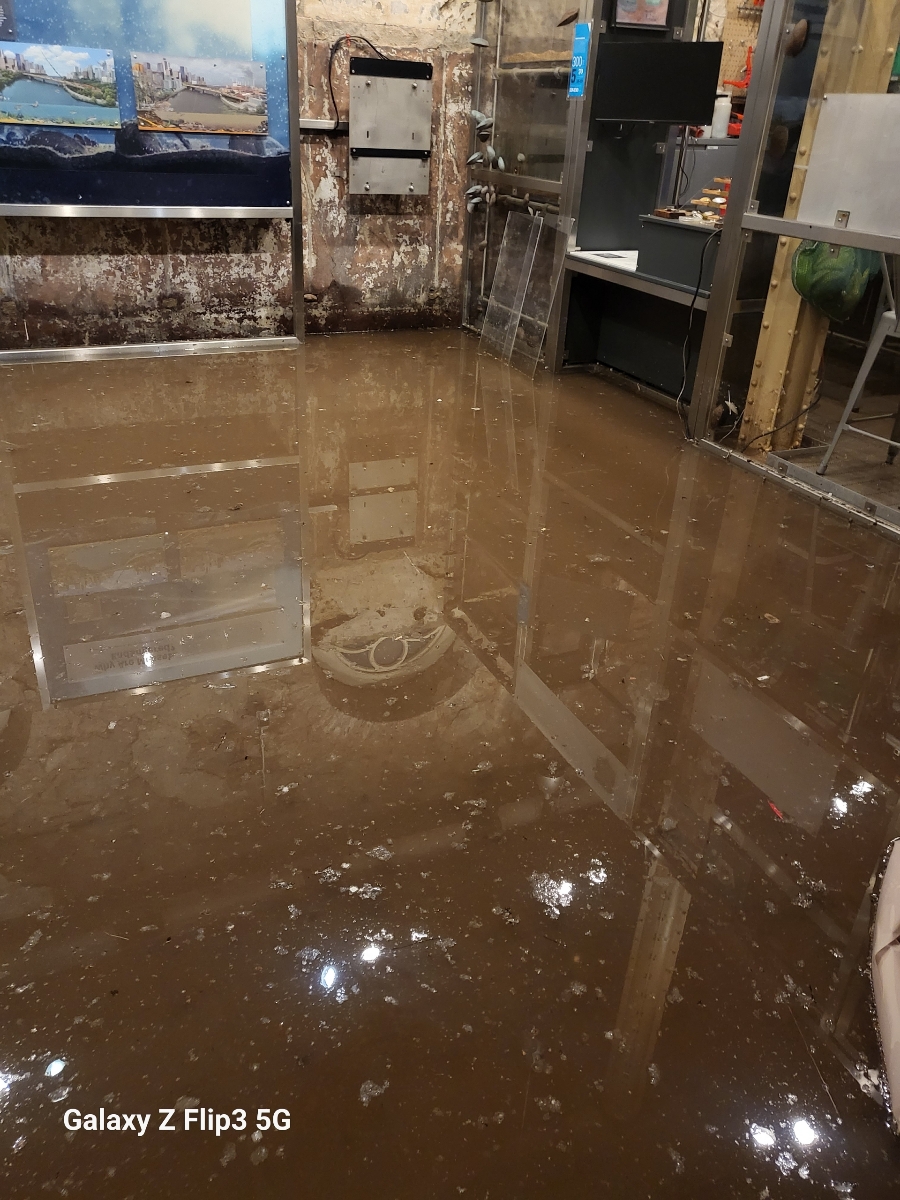Flooding in Philadelphia
Flooding is nothing new for Fairmount Water Works. Since the building was first constructed more than 200 years ago, several severe floods have affected the space, including Tropical Storm Hurricane Agnes, which is recognized as Pennsylvania’s worst natural disaster. Flooding from Agnes ultimately closed Kelly Pool, which had been functioning as a desegregated pool under the Water Works plaza for ten years. Of course, another notable flood in recent memory is the one caused by Hurricane Ida. Though Ida was fizzling out by the time it arrived in the Philadelphia area, it managed to bring heavy rain that caused the Schuylkill River to rise over its banks. The River filled the Vine Street Expressway and flooded nearby neighborhoods like Manayunk and Fitler Square. The river also flooded Fairmount Water Works, filling the space with water and causing it to close for nearly six months for cleaning and sanitizing. As a water pump station, the Fairmount Water Works building was originally designed to take on water, so the building itself can withstand being flooded. Any materials, exhibits or additional infrastructure within the building needs to be easily dismantled and moved to higher ground.
Flooding is not unique to the building or even to the Fairmount area. Notable neighborhoods affected by frequent flooding include Eastwick and Germantown, to name a few. Eastwick faces many environmental challenges based on its location in low-lying flood prone land and near the Philadelphia International Airport, two major highways, a closed oil refinery, and a landfill. Similarly, areas in Germantown may experience flooding because homes and streets were built over old creeks and sewers, causing infrastructure flooding. Both neighborhoods have flood and community resources available on the city’s website under the Flood Management Program.
In addition to specific neighborhoods, Philadelphia’s Flood Management Program provides resources for a range of needs, including an overall guide to flooding in Philadelphia, household guides, surveys, and requirements for property development. Even more flood information can be found through the Philadelphia Water Department. The proud provider of water services to the city established the Climate Change Adaptation Program, or CCAP, to better understand the impacts of climate change on its systems and develop strategies to minimize those impacts. In January of 2022, the CCAP’s Climate-Resilient Planning and Design Guidance was implemented to transform climate science into actionable products and tools for the Water Department. In addition to CCAP, the Philadelphia Water Department has designed a program focused on climate change mitigation, called Resource Recovery and Energy Production. This program is designed to increase energy independence and make infrastructure more resilient.
So while flooding may continue to affect parts of the city, especially given the progression of climate change, both the city and the Water Department have plans and resources for citizens and visitors alike.

